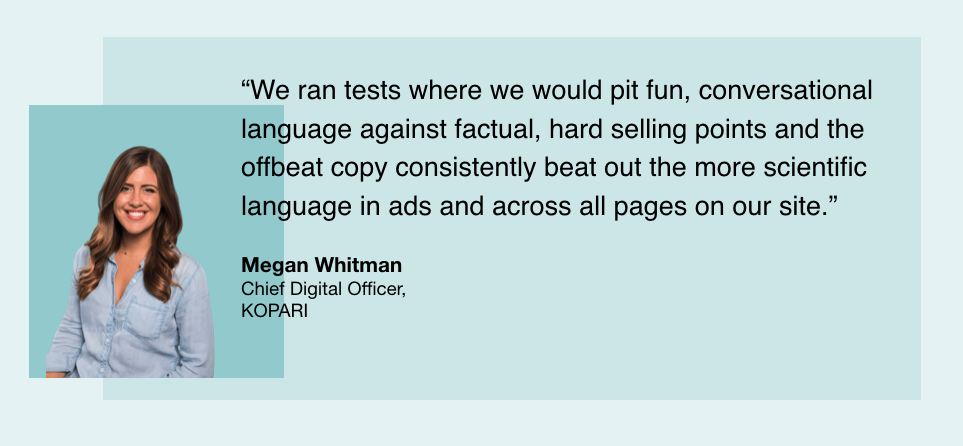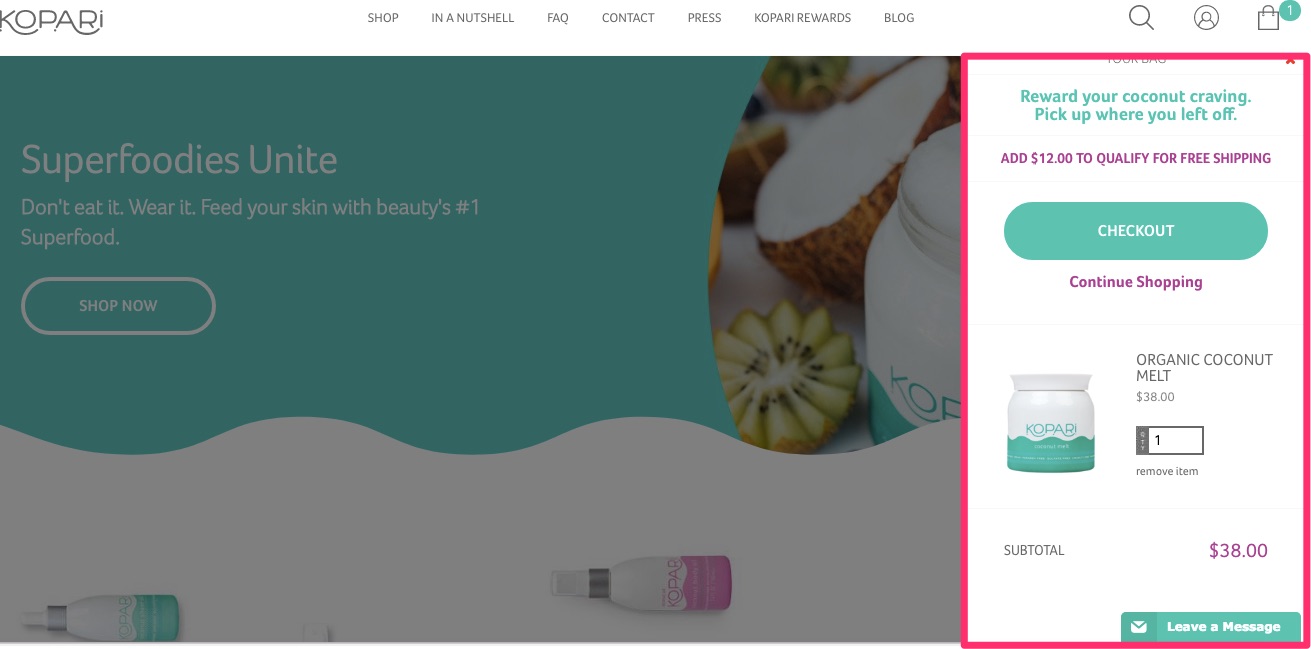Building an experimentation growth plan: A Kopari Beauty case study
A conversation on personalization, conversion optimization and what makes the coconut the most kickass ingredient known to (wo)man with cosmetics retailer Kopari.
Summarize this articleHere’s what you need to know:
- Kopari Beauty uses coconuts to create their beauty products, standing out with a playful brand image and website.
- A/B testing helps Kopari optimize their marketing efforts for maximum impact.
- Personalization is key for Kopari, with tactics like retargeting cart abandoners and showing customized product pages.
- Kopari’s success lies in their dedication to data-driven marketing and understanding their audience.

Hundreds of years before Zico, Cast Away and that fateful pina colada in Bermuda that facilitated your existence, cultures around the globe revered coconuts as a panacea. As San Diego cosmetic retailer Kopari’s website proclaims, the coconut is the most kickass ingredient known to (wo)man.
While coconuts have already become the new corn in the US (read here), the fruit’s potential as a beauty product remains largely untapped. While ancient Hawaiians have used coconut oil in beauty rituals for centuries, there aren’t yet enough Instagram models trading chemicals for coconuts for it to hit the mainstream. Kopari aims to change that.
Kopari’s products stand out as they use 100% coconut oil sourced from the Philippines to create “beauty bombshells.” But it’s Kopari’s website that truly dazzles. How does a company that is still shy of its second birthday deploy such sophisticated optimization at scale?
To find out, we chatted with Chief Digital Officer Megan Bush and eCommerce manager Lanie DePasquale about building a cheeky website that takes a user to paradise, creating a culture of experimentation, and moving from testing to full-scale personalization.
Having Fun While Driving Results
The moment I say Aloha to the Kopari website, I’m transported to an island oasis, chatting beachside with my wittiest and most beautiful friends. An overlay message invites me to ‘be friends with benefits” while the About Us section (impeccably titled In a Nutshell) tells me to coconut with confidence. On a product page, I’m told to put coconut “all over my beautiful bod.”

After the initial overlay deployment, a bottom bar notification “wave” encourages me to sign up for Kopari’s newsletter
“We want this to be a brand that you talk to your friends about,” says Bush. “We want to have a conversation with our customers as though you were talking to a friend about a product you like to use.”
However, crafting an effervescent and spunky brand image does not come at the expense of being a company driven by hard-metrics. Before rolling out irreverent copy sitewide, Kopari A/B tested many of the variations currently on the website against more vanilla content that communicated product benefits. The results proved that being cheeky pays off.
“We ran tests where we would pit fun, conversational language against factual, hard selling points and the offbeat copy consistently beat out the more scientific language in ads and across all pages on our site.”
Crafting a Culture of Experimentation
While Kopari’s founders come from the beauty, lifestyle and CPG industries, Bush (a math major in college) comes from a hardcore culture of testing dating back to her time as a conversion optimization guru at Blue Acorn. She’s had little trouble bringing that mindset to Kopari as a “test-it” mentality has made it easy for all voices to be heard.
“When you have a company founded by different backgrounds, there are a lot of opinions being thrown around. The best answer is usually why don’t we just test them all?”
Kopari measures all tests based on revenue per user impact, believing that given their relatively short conversion funnel, attributing on an RPU basis yields the most actionable results.
Often times, the tests reach unexpected conclusions. Notably, Kopari recently flexed serious creative muscle taking a beautiful photo of a model on a surfboard to use for a homepage banner. Before exposing this to all of their traffic, Bush and DePasquale tested the variation against a standard image featuring three products. On a revenue per user basis, the product banner was considerably more effective.
“You can’t argue against data”, says DePasquale. “When you start to test it becomes a lifestyle.”
From Testing to Full-Scale Personalization
As Kopari plans to celebrate its second birthday, the company has reached a tipping point of awareness that has made personalization a strategic priority. “When we first launched, nobody knew who we were so we could treat everyone the same. Now that we have a bit more awareness, we try to take a look at our funnel, understand where a user might exist and create experiences accordingly.”
One particularly impactful deployment has been the tried and true practice of retargeting a returning cart abandoner with a welcome back reminder, of course delivered with the usual Kopari flair.
Additionally, Kopari is experimenting with personalized product pages that are thematically aligned to the ad a user engaged with and continuing to religiously test messaging for different audience segments, based on level of previous engagement with the brand.
Moving forward, Kopari plans to reimagine their mobile website after realizing that returning users to context by showing previously viewed on mobile has yielded considerable revenue uplift.
“The fact is that mobile and desktop users engage with our site quite differently. As a result, we’re starting to create entirely unique experiences for our mobile visitors.”

